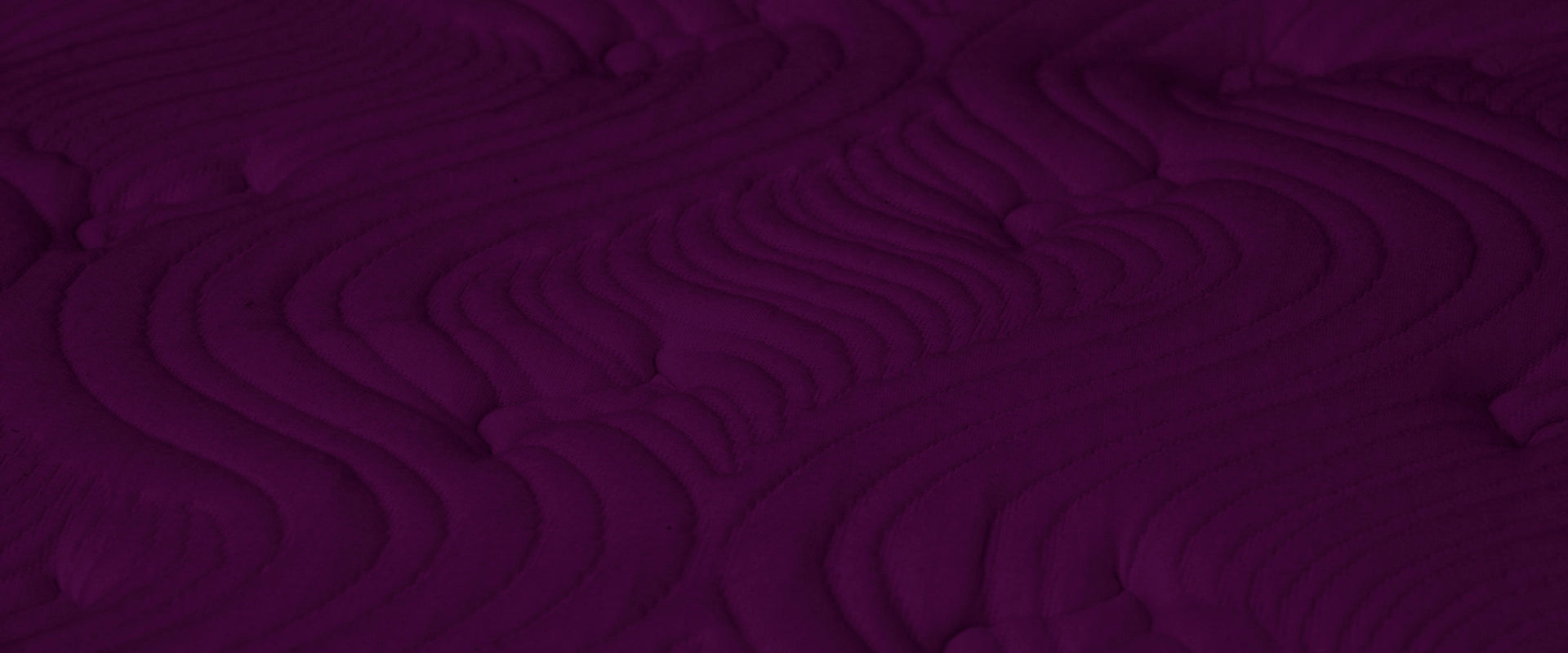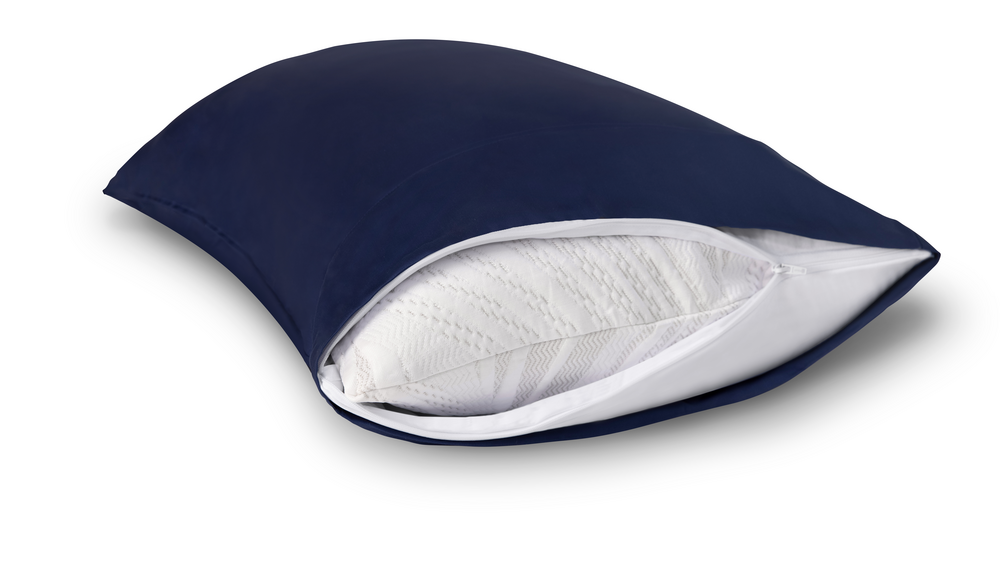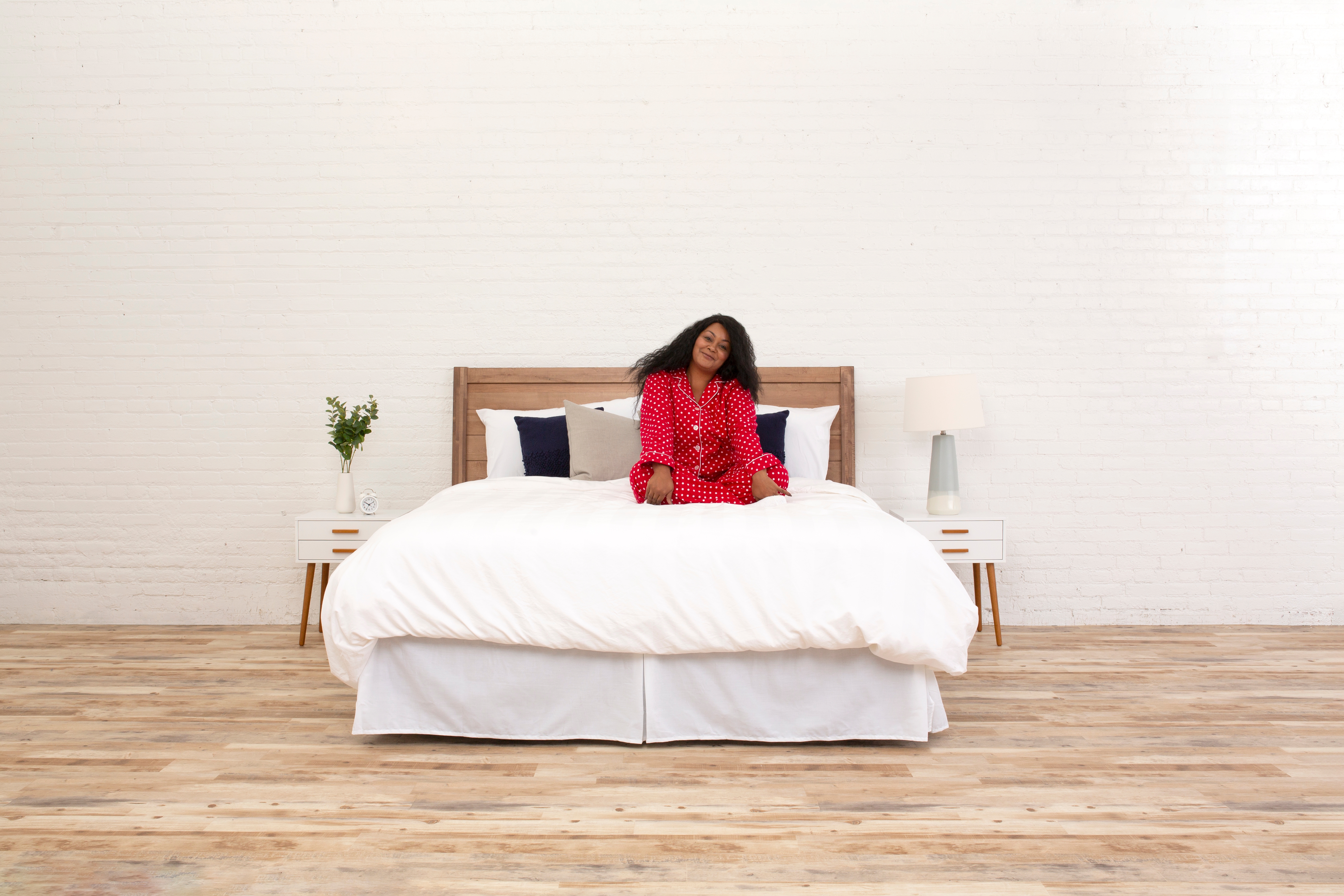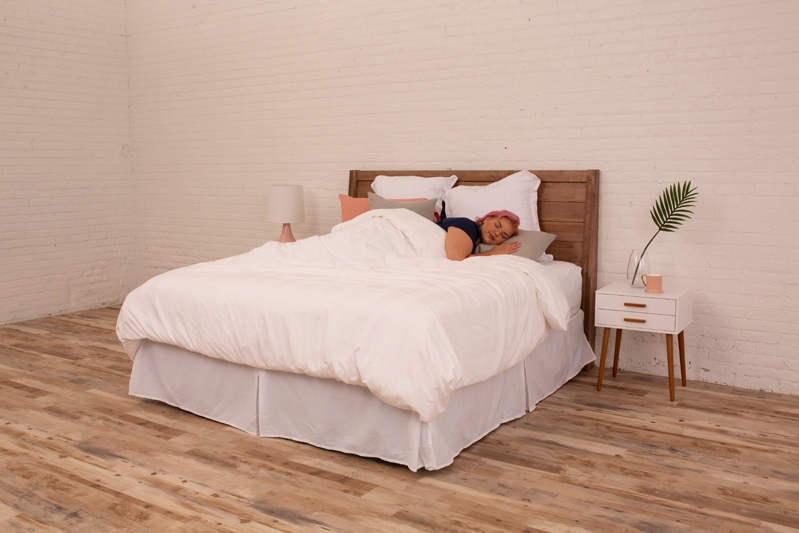Ok let’s start at the beginning… what is a pillow protector?
Well if you have a Big Fig, you’ve probably already been encouraged to use a mattress protector. A pillow protector is the same concept, but smaller. A pillow protector is also called a pillow cover or pillowcase encasement. It is designed to go over your pillow, providing an extra layer of protection.
The Big Fig Pillow Protector is waterproof, washable and closes with a zipper. It's designed to be your impenetrable barrier to a whole spectrum of grossness. To be more specific, there are several reasons why someone may want to seriously consider the use of a pillow protector:
Protection against allergens: Pillow protectors can be a game changer for individuals who suffer from allergies or asthma, as it helps reduce their exposure to these irritants while they sleep. There are several allergens that can make their home and grow inside a pillow if it is not protected.
- Dust mites: microscopic insects that are commonly found in bedding, including pillows. They feed on dead skin cells and thrive in warm, humid environments. Dust mite allergens, including their feces and body parts (we’re cringing too), can trigger allergic reactions in sensitive individuals, causing symptoms such as sneezing, runny nose, itching, and congestion.
- Mold and mildew: fungi that can grow in damp conditions, such as when moisture accumulates in a pillow due to sweat or other bodily fluids. Mold and mildew can release spores into the air. These spores can be inhaled. This can trigger allergic reactions or breathing issues, especially for people who are already vulnerable.
- Pollen: This trigger from flowers, trees, and grasses can enter your home and accumulate in your bedding, including your pillow. If you are allergic or even slightly sensitive to pollen, having pollen trapped in your pillow can cause allergic reactions, such as sneezing, watery eyes, and nasal congestion.
- Pet dander: If you have pets, their dander, which consists of tiny flakes of skin (yuck), can accumulate in your pillow. Pet dander can trigger allergic reactions in individuals who are allergic to pets, causing symptoms such as sneezing, itching, and congestion.
- Bacteria and germs: Pillows can also harbor bacteria, germs, and other microorganisms that may accumulate over time from saliva, sweat, and other bodily fluids. These can potentially cause odors, stains, and contribute to poor hygiene… (we want a shower now, but it gets worse).
Bed bug prevention: These small insects that feed on human blood are known to infest bedding and terrorize your home. Using pillow protectors can help prevent bed bugs from infiltrating your pillow and can make it easier to detect and address a bed bug infestation if it occurs.
It is important to note that bed bugs are not always a result of uncleanliness or poor hygiene.
Anyone, regardless of their living conditions, can encounter a bed bug infestation. Bed bugs can hide in used furniture, such as mattresses, sofas, chairs, and other upholstered items, as well as in used clothing, linens, or other fabric items. Bringing infested furniture or clothing into a home or other environment can introduce bed bugs and lead to an infestation.
You just need to be super careful. Taking preventive measures such as inspecting used items, being cautious during travel, and practicing good hygiene can help reduce the risk of bed bug infestations. If you suspect a bed bug infestation in your home, it's essential to contact a professional pest control service for proper identification and treatment.
Hygiene and cleanliness: Ok we’re feeling better... the point is that pillow protectors can help keep your pillow clean and fresh. Aside from the gross germs, bacteria, and bugs, they can prevent sweat, saliva, and other bodily fluids from causing stains, odors, and yellowing of your pillows. Big Fig Pillow Protectors are easy to remove and wash, making it convenient to maintain a clean sleeping environment.
Prolonging pillow lifespan: Investing in a good quality pillow can be an investment, and using a pillow protector can help extend its lifespan. By keeping your pillow clean and dry, a pillow protector can help maintain its shape, support, and overall durability.
But what does that even mean? Well, different types of pillows have varying lifespans. For example, synthetic pillows typically last for about 1-2 years, while down and feather pillows can last for 2-3 years or longer.
Memory foam pillows can last for 3-5 years or more, depending on the quality. These estimates are general. An individual pillow's life span may vary depending on quality, usage, and care. It can wear out sooner or last longer.
Your sleeping habits can also affect the lifespan of your pillow. If you tend to move around a lot during the night, fold or bunch up your pillow, or apply excessive pressure on it, it may wear out faster. Similarly, if you tend to sweat heavily at night, your pillow may accumulate more moisture and require more frequent replacement.
Finally, if your pillow has lost its shape, has become lumpy, or is no longer providing adequate support, it may be time to replace it to ensure you get the best possible sleep.
So, do you need to use a pillow protector? Well, we certainly think so. It's a relatively inexpensive investment that can contribute to a cleaner, healthier, and more comfortable sleeping environment. For us that’s totally worth it.




